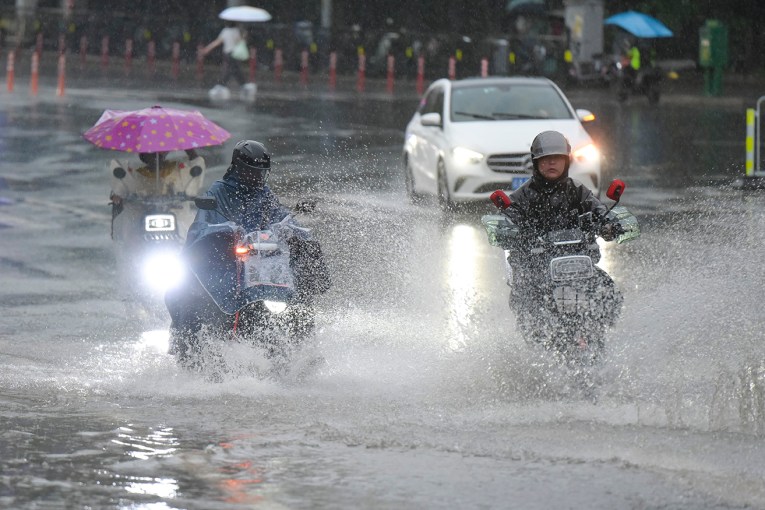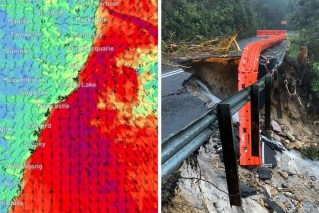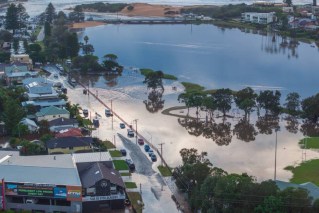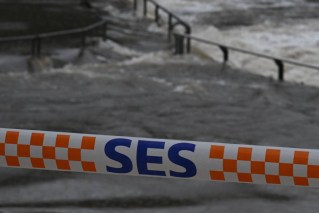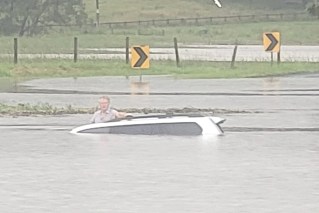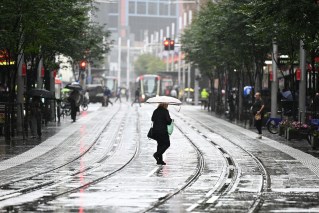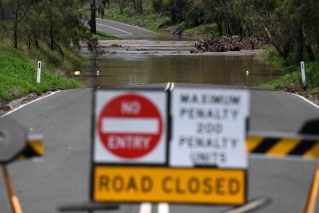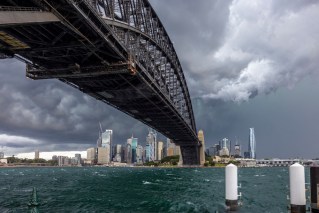Authorities call for urgent action on water savings amid ‘millennium drought’ conditions

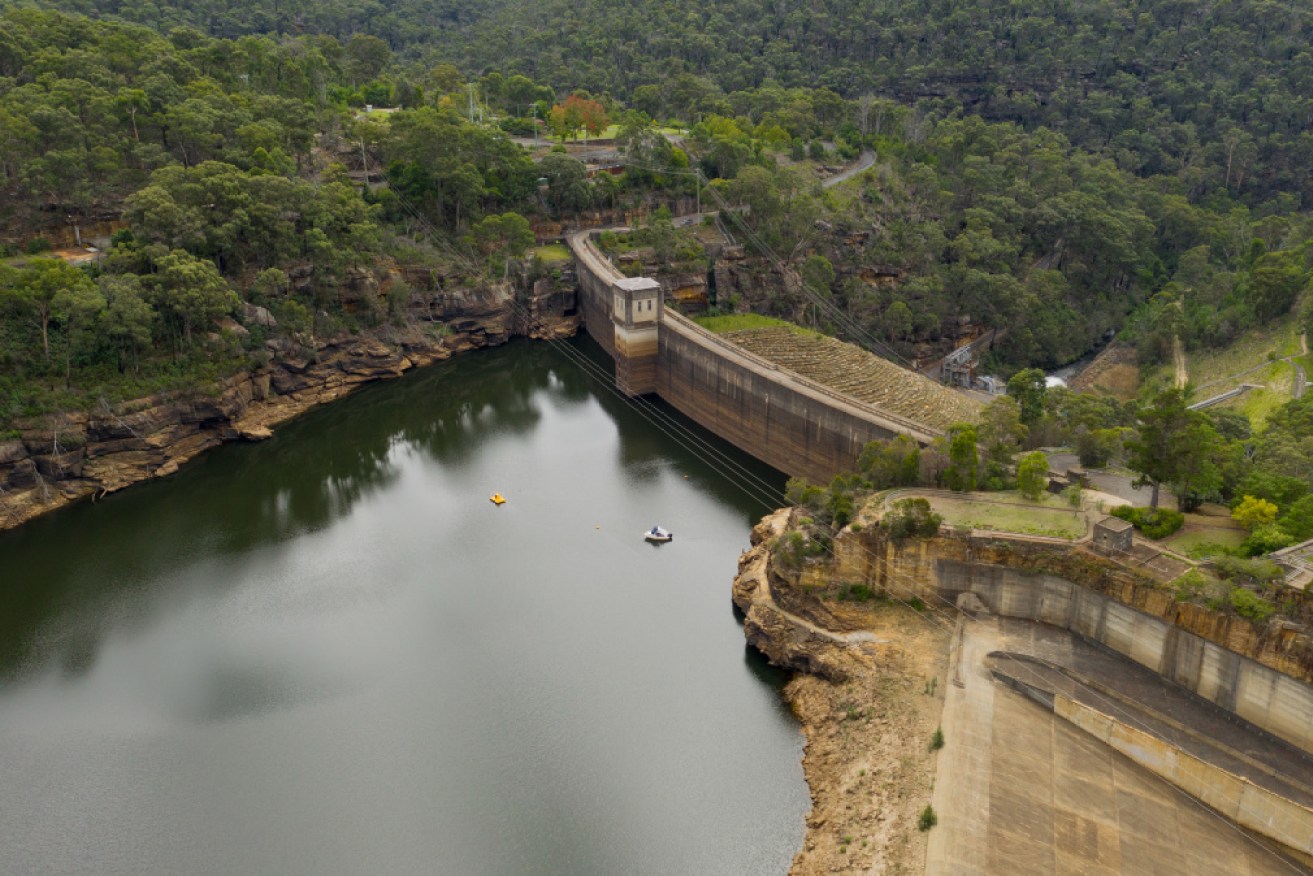
The Nepean Dam in New South Wales is sitting at 54.7 per cent capacity.
Major Australian cities are facing conditions at the level of the “millennium drought” – one of the nation’s worst dry spells – but suburbanites don’t even realise, a new report has revealed.
Water levels in Sydney have dropped 40 per cent in just two years, but research shows two out of three people remain oblivious to the shortage and many city-dwellers believe drought only affects rural Australians.
Authorities are warning residents they may soon face restrictions on when they can use water and for what purposes.
It comes amid fears people living in Darwin could run out of water, as the Northern Territory recorded its driest wet season in almost three decades amid temperatures 2.5 degrees above the average.
The Darwin River Dam, which supplies water to the Darwin metropolitan area, was 75 per cent full, according to data released on Friday.
This time last year it was 98 per cent full.
Conditions like the drought of the 2000s
The ‘millennium drought’, between 1996 and mid-2010, devastated much of southern Australia and prompted a new Australian consciousness about water scarcity.
Back then, images of a devastating dry filled the front pages of the daily papers: Barren backyards, dried-up dams and grief-stricken farmers clasping the dusty earth in their weathered hands.
There are fears now that all that was learned in those harsh times have been forgotten. Water-saving, experts said, doesn’t seem to be front of mind as much as it was – but now there may be a need to re-educate Australians about those habits.
Figures last week showed water storage in the majority of Australia’s capital cities are hovering at or below the 50 per cent mark, and for much of the south east of the country, rainfall has been well below average all year.
In some areas, it hasn’t been this dry since the Australian Bureau of Meteorology began recording rainfall in the 1850s.
The BoM also reported on Friday that it has been the “warmest January to April period on record”.
Below, The New Daily looks at some of the worst-suffering cities.
Sydney
Water authority Sydney Water has warned dam levels are at record lows from 96 per cent capacity in April 2017 to just 55 per cent in April 2019.
However, a survey commissioned by the water authority of 1000 Sydney residents in April found nearly two-thirds of residents, or 63 per cent, were unaware of the current conditions.
A perception drought only affected regional and rural areas also persisted.
The study found more than a quarter (26 per cent) of inner-city dwellers didn’t believe the drought would affect them.
Sydney Water is asking residents to restrict showers to four minutes, fix leaky taps, run full loads of laundry and turn off taps while brushing teeth.
“This is the greatest rate of depletion in decades and the lowest level of inflow into the dams since the early 1940s,” Sydney Water drought lead executive Catherine Port told The New Daily.
“The levels of inflows to our dams are now worse than the millennium drought.”

The Avon Dam’s water levels has prompted Sydney Water to issue water-saving tips.
NSW Minister for Water Melinda Pavey said when you looked around Sydney’s green parks and gardens, it was understandable the importance of conserving water may not be top of mind.
“But we’re experiencing some of the driest conditions on record and while we had some good rain in some areas during March, overall our dam levels continue to drop,” Ms Pavey said.
Melbourne
It’s a tale of two very dry cities, with Melbourne also recording below-average rainfall and warmer days and nights in April.
Laverton, Essendon Airport, Wallan and Newham recorded their lowest April total on record this year. Newham received just 3.8 millimetres, compared to an average of 44.5 millimetres.
There was a welcome pitter-patter of rain on Melbourne roofs on Thursday morning after record downpours drenched parts of north central and north-east Victoria.
But BoM meteorologist Tom Delamotte told The New Daily the showers offered little reprieve for the city.
“For our [weather] station in Melbourne, we are running the driest start to the year on record until this side of May,” Mr Delamotte said.
“We have just received some rainfall that has just pushed us past the driest start to the year on record, but it’s still a very dry start in terms of the rainfall so far this year.”
Normally, Melbourne would receive about 154 millimetres of rain between January and the start of May.
This year, only 49 millimetres fell in that time.
“It’s certainly quite a marked rainfall deficiency in terms of the year to date … within the lower 10 per cent on record,” Mr Delamotte said.
Brisbane
Brisbane recorded only about two-thirds of its usual rainfall this year.
The total for last month there was 42.6 millimetres, markedly down on the long-term April average of 61.5 millimetres.
BoM meteorologist Lachlan Stoney told The New Daily that summer and early autumn were typically pretty wet in Brisbane, with about 450 millimetres of rain usually falling between January and April.
But this year, only 300 millimetres has fallen on the city.
Mr Stoney said rain was also “not in the immediate future”, and the next three months were typically expected to be quite dry.
While he didn’t believe the lack of rain signalled “drought conditions”, Mr Stoney said Brisbane’s many dams needed regular rainfall.
“It has been a very dry summer.”
